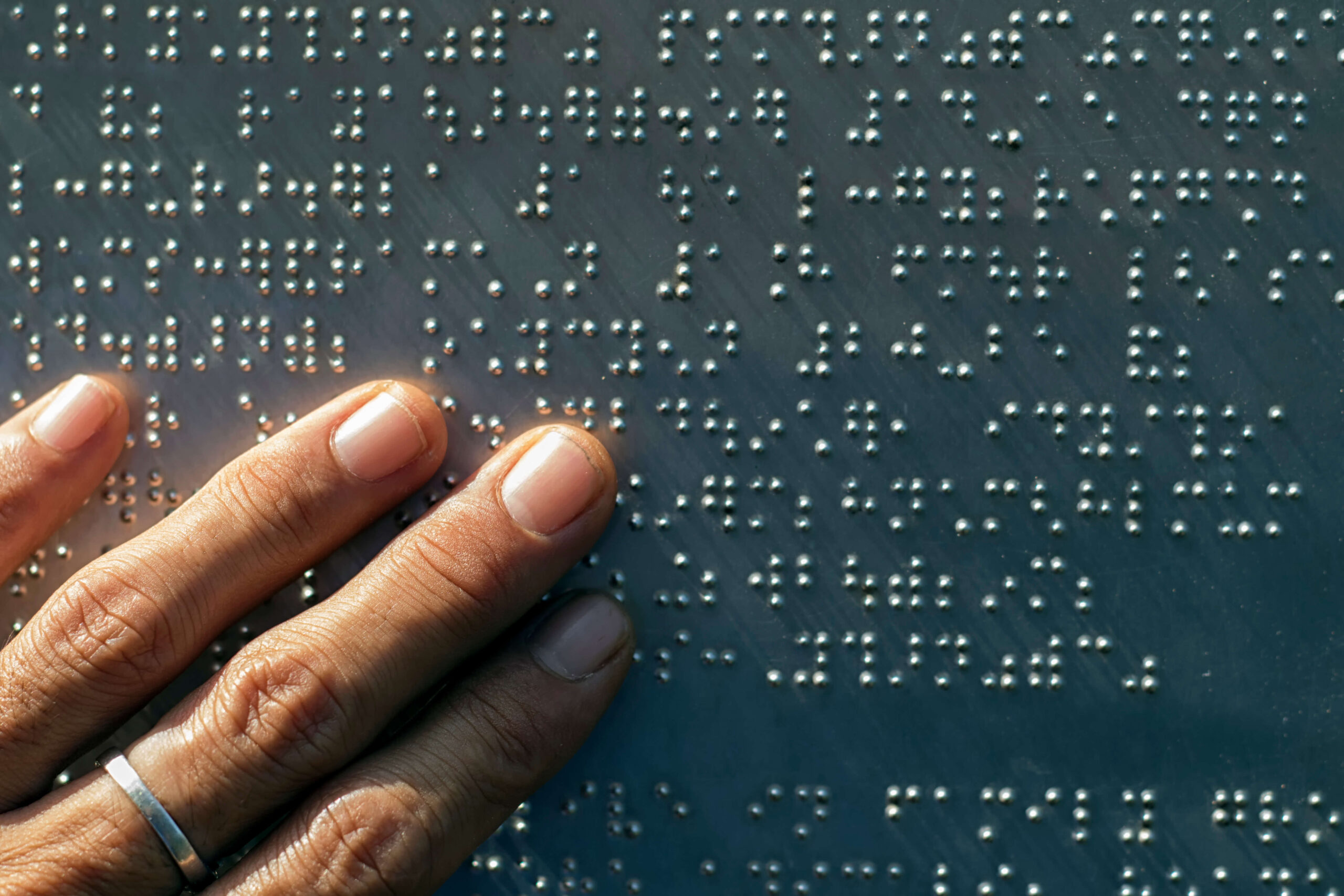More than a year after oral arguments in Calcano v. Swarovski North America Ltd., No. 20-1552, the U.S. Court of Appeals for the Second Circuit affirmed a lower court’s dismissal of five nearly identical lawsuits brought by blind plaintiffs seeking to compel retail defendants to issue gift cards with braille on them. Although the dismissals were based both on the lack of standing and the absence of any legal requirement to place braille on the gift cards, the Second Circuit’s majority decision on the consolidated appeals was limited to the absence of standing, remaining silent on the merits. The concurring opinion found standing in four of the cases but affirmed the dismissal on the merits.
The 249 District Court Lawsuits
The five lawsuits whose appeals were consolidated are near copies of almost 250 lawsuits against national, regional, and local retailers filed in the Southern and Eastern Districts of New York in the fall of 2019. The group of plaintiffs, each of whom filed as many as several dozen near-identical lawsuits, claimed that the Americans with Disabilities Act (ADA) required the defendant retailers to put braille lettering on at least some of their gift cards so that blind people could identify textual material on the gift cards, including the name of a retailer and the value of a gift card.
Motions to dismiss were filed in a large number of the lawsuits, asserting both a lack of standing and the absence of any ADA requirement to provide such braille gift cards. Many of the district courts hearing those motions granted the motions on both grounds, while others granted motions based strictly on standing. In nearly all of the cases, the plaintiffs responded to the motions to dismiss with amended complaints, which were met with new motions to dismiss. Almost all of the motions to dismiss were granted for lack of standing, a failure on the merits, or both. When the Second Circuit accepted and consolidated the appeals from the first five dismissals in mid-2020, the courts in the Southern and Eastern Districts of New York universally stayed the remaining actions pending the outcome of the appeals. For that reason, the parties in the stayed cases had been anxiously awaiting a decision on the appeals.
The Consolidated Appeals at the Second Circuit: the Majority Opinion
The five consolidated appeals involved the earliest dismissals from which appeals had been taken and were based on both standing and merits reasons. The Second Circuit majority opinion addressed standing first, noting that the case could not proceed if the court lacked jurisdiction. Reviewing the plaintiffs’ near-identical allegations in their complaints, the court found implausible the plaintiffs’ allegations that they regularly visited the retailers in question, lived nearby, and intended to visit again to buy braille gift cards as soon as they were made available. In particular, standing principles require that a plaintiff affirmatively and plausibly allege both an actual injury or an imminent threatened injury if the conduct goes unchanged.
The Second Circuit majority found the plaintiffs’ allegations of an imminent injury implausible because of the plaintiffs’ vague allegations about prior visits and proximity to the stores, and on several occasions, contrary to known facts about store locations and the plaintiffs’ residences. The court also found many of the plaintiffs’ allegations to be conclusory and incapable of raising an inference of injury. Among other things, the court found significant that the plaintiffs’ allegations were identical to those made in their eighty-one lawsuits, finding that the repetition of the same pleadings in so many cases confirmed the implausibility of the alleged injury and intent to return.
Because the lack of standing left the lower courts and the Second Circuit without jurisdiction to hear the claims, the court did not reach the merits of the case. In each of the appeals, the plaintiffs declined to amend their complaints, a fact that permitted the Second Circuit to decide the standing issue with finality.
The Second Circuit: the Concurring Opinion
The concurring opinion took strong issue with the majority’s standing analysis, asserting that the majority’s requirement of a plausible intent to return to the retailer was not required by the Constitution or standing law precedent. Based on its relaxed view of standing, the concurring opinion found that all but one of the plaintiffs had properly alleged standing.
Notably, however, the concurring opinion reached the merits and held that the plaintiffs had failed to state a claim that braille gift cards were required. The concurring opinion provides additional hope for defendants with cases remaining in district court, or for those who lost their standing challenges below while prevailing on the merits.
The concurring opinion found that a gift card was itself a “good” and that places of public accommodation need not alter their inventory of goods to benefit the disabled. It also found that a gift card was a “means of access” [emphasis added] to a retailer’s goods and services and that such means must be made equally accessible to persons with disabilities. Noting that places of public accommodation are free to choose among various means of “effective communication” with blind (or deaf) customers, the concurrence found that the plaintiffs did not, and could not, adequately allege that braille was the only type of ADA-compliant auxiliary aid or service that would be workable in this context. Providing sales clerk assistance, for example, to read the text on the gift card may be adequate.
According to the concurrence, the plaintiffs did not adequately allege that the defendants failed to offer an auxiliary aid or service other than braille in using the gift cards. A mere conclusory allegation that the defendants offered no auxiliary aids or services was inadequate to sustain the claim.
Given the conflicting standing rulings between the majority and concurring opinions, and the significance of the merits question for many “effective communication” cases, we may yet see a petition for a rehearing of this ruling by the entire Second Circuit panel.
The Stayed Cases, Post-Appeal
Because the Second Circuit’s decision was limited to standing, and because each of the stayed cases was in a different procedural posture at the time the stays were entered, the impact of the Second Circuit’s decision will necessarily vary. The day after the Second Circuit’s ruling, the district court in the Eastern District of New York that had consolidated all remaining braille gift card challenges in one courtroom issued a decision dismissing all of those cases on the basis of standing and the absence of any ADA requirement to put braille on the gift cards. It is unclear if the plaintiffs will challenge those rulings.
The dozens of cases still pending in the Southern District of New York remain unconsolidated, and the various judges with cases on their dockets are expected to act quickly to move those cases forward, either to decisions on the motions to dismiss, to discovery, or both. Here too, it remains unclear if the plaintiffs will want to continue to invest resources in the cases to try to distinguish them from the Second Circuit’s ruling on standing, and, if successful, press the merits of the claims.
Each case will require distinct analysis and a tailored approach to what will likely soon be resumed litigation.
Key Takeaways
While the Second Circuit’s affirmance of the dismissal of the five lawsuits is certainly a favorable result for the business community, the narrow basis for the ruling—a lack of standing—could give life to some of the remaining lawsuits. Here are some of the significant takeaways from the decision:
- The lack of standing for the plaintiffs in the cases may vary depending on the type of retail business sued and the proximity of that business to a plaintiff’s home.
- It is unclear whether the defeat at the Second Circuit will discourage the plaintiffs and their lawyers from further investing in and pursuing their cases, even where there is a legal pathway to do so.
- The Second Circuit majority’s decision to avoid the merits questions leaves unanswered the operational question of what a business must do to accommodate blind patrons. The availability of technologies or the existence of other means to accommodate the blind (or persons with other disabilities) does not mean that businesses are required to do so. The concurring opinion may provide a template for future courts, within and outside the Second Circuit, to reject these claims.
- The ADA requires businesses to provide “effective” accommodations that will provide a “like experience” to persons with disabilities. What is “effective” and what provides a “like experience” will often require careful thought and analysis.
- Until these kinds of questions are definitively answered, businesses can expect continued requests or demands (and/or lawsuits) from the disabled community.
- A party defending a lawsuit whose allegations are repeated in multiple lawsuits may wish to point to the repetition to help support a challenge based on standing.






